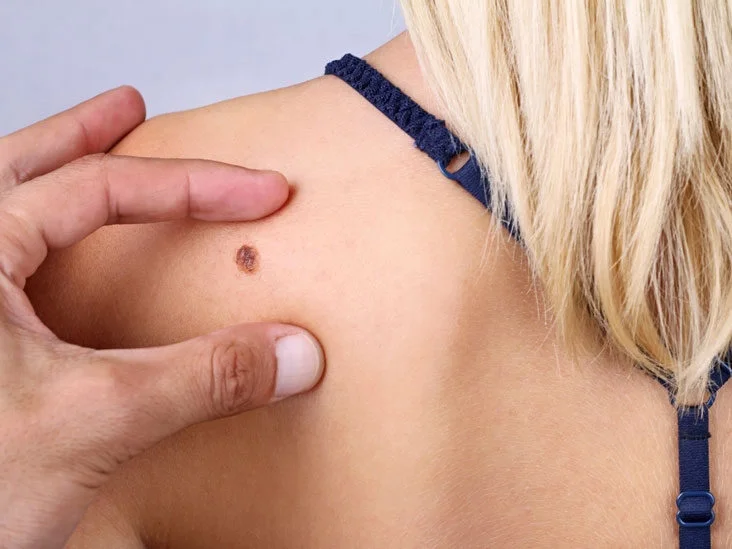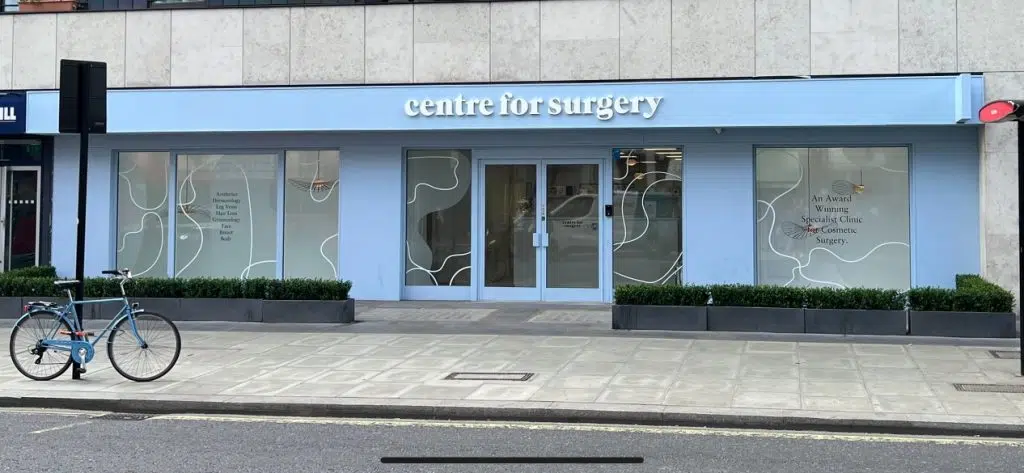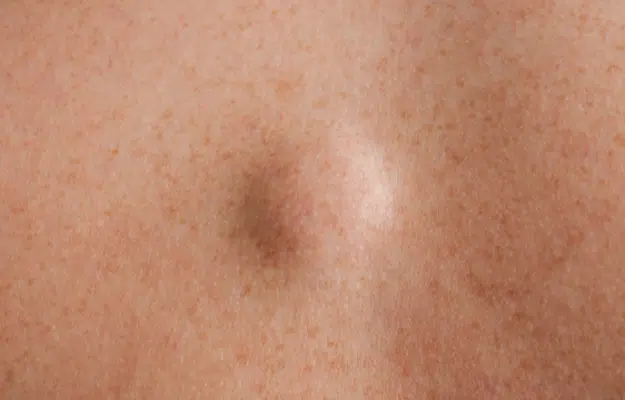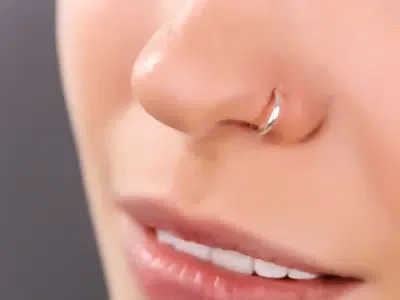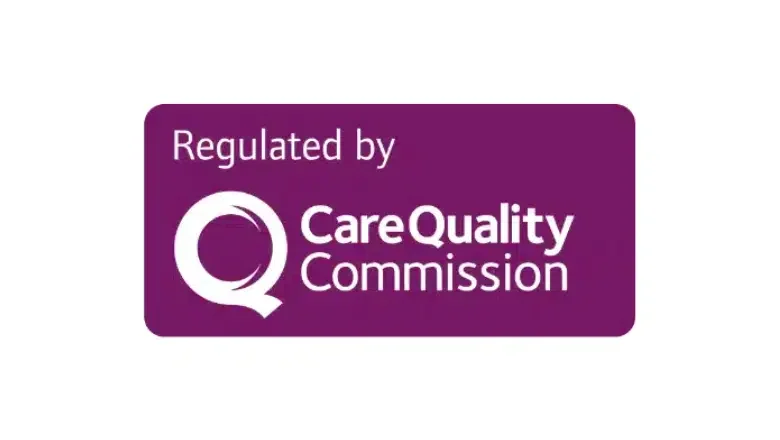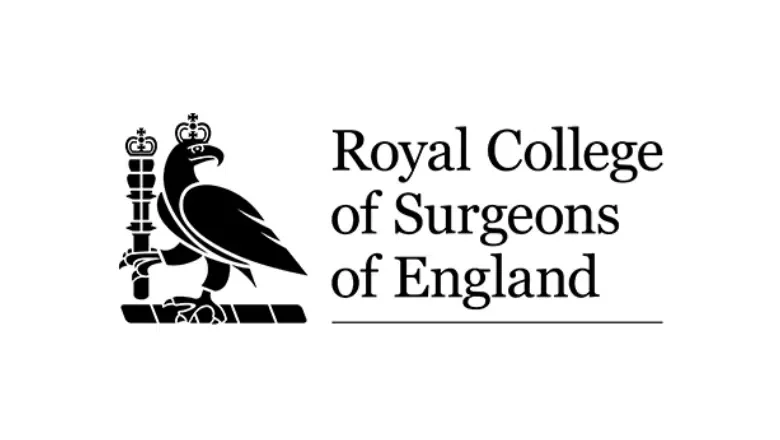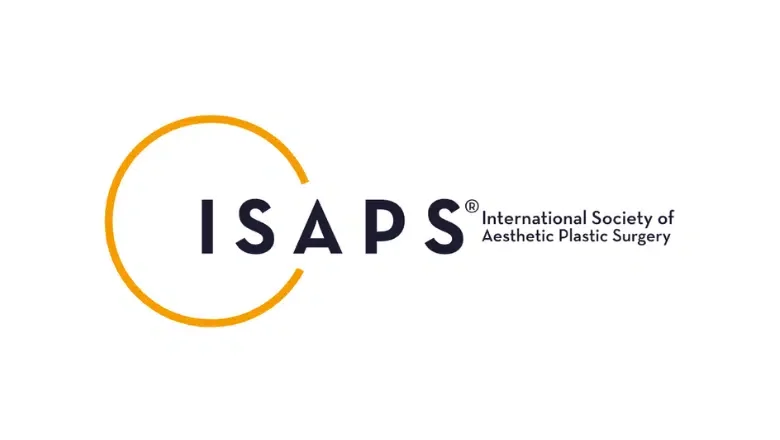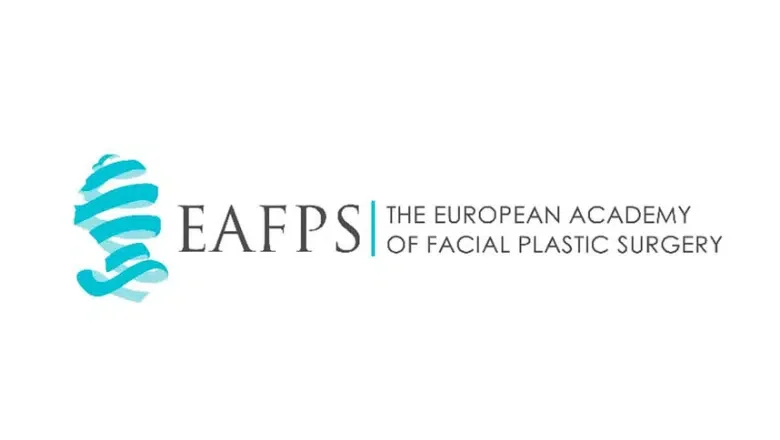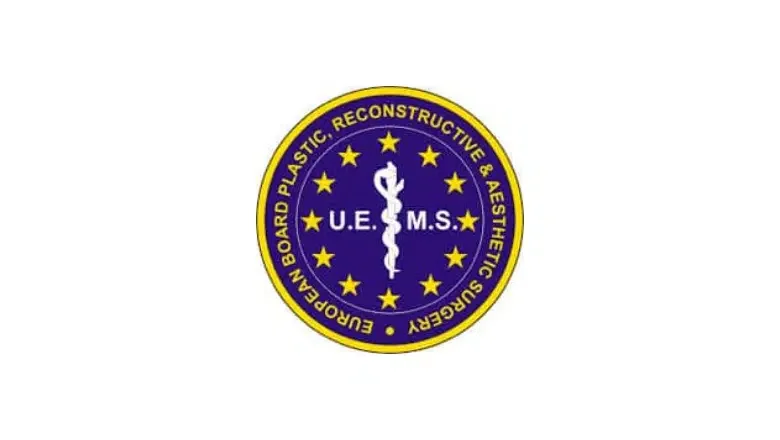Skin Lesion Removal Surgery London UK
Skin lesions, also known as skin lumps and bumps, are skin blemishes that are commonly found on the skin surface or just beneath the skin in the subcutaneous fat layer. Common types of skin lesions include skin tags, warts, or moles and can be quickly and efficiently removed by one of our expert dermatologists. The vast majority of skin lesions or skin lumps are benign in nature and are removed for cosmetic reasons. In a small number of cases, a skin lump or bump may possess sinister features that require further testing, which may include a skin biopsy to rule out cancerous changes.
At Centre for Surgery, our practitioners would always recommend not to wait for a skin lesion to settle on its own and to seek assessment by a specialist dermatologist. Skin cancers comprise a very small proportion of skin lesions, although the number of skin cancers is on the rise, and these skin lesions can be very dangerous to leave to grow unchecked. If in doubt, you should always seek an urgent dermatology review for your peace of mind. It is always better to have a skin lesion assessed and its nature determined to be benign and harmless than to simply ignore it in the hope it will disappear on its own.
Centre for Surgery specialises in all types of skin lesion removal using state-of-the-art surgical and erbium laser methods at our state-of-the-art CQC-regulated facility on Baker Street in Marylebone, London.
What are skin lesions?
Skin lesions are very common; most people will have some at some point. Skin lesions can vary in size, shape, and colour and can appear anywhere on the body. Some skin lesions can be present at birth, such as birthmarks and moles, while some skin lesions can develop later in life, such as cysts, warts and lipomas. Skin lesions can be caused by several factors. Some skin lesions, such as freckles, birthmarks, and moles, can be genetic however, the most common cause of many skin lesions is environmental in origin—for example, infective skin lesions caused by bacteria.
Most skin lesions are completely harmless and there is often no need to remove them. However, many skin lesions can become a cosmetic nuisance; therefore, many patients prefer to undergo skin lesion removal. If a skin lesion causes pain or discomfort or displays signs which are potentially cancerous, then skin lesion removal would be appropriate. It is always recommended to consult with your GP if you notice a suspicious-looking lump. The vast majority of benign skin lesions are assessed and removed by specialists in the private sector. The NHS does not usually undertake skin lesion removal for benign (non-cancerous) lumps and bumps.
Addressing Skin Lesions
Skin lesions that are cancerous require immediate medical intervention, and surgery is often the most trusted and effective approach. Many individuals opt for plastic surgery to remove these skin lesions to achieve the best possible cosmetic outcome. On the other hand, some skin lesions, such as moles, are benign and pose minimal risk. Despite their harmless nature, they can also be removed for aesthetic purposes.
Why perform a skin biopsy?
Where the precise diagnosis of a skin lesion is uncertain or the dermatologist requires confirmation of the diagnosis, then a skin biopsy will be performed. Many skin biopsies can be performed in several different ways. Very often, a punch biopsy or shave biopsy is undertaken. The advantage of both methods is that they both leave smaller scars. They are used when there is uncertainty over a diagnosis or previous treatments have failed. Suspicion of skin cancer is a very common reason to perform a skin biopsy. In these cases, common biopsy techniques include a punch biopsy, shave biopsy or an incision biopsy. In some cases, an excision biopsy is performed. In this case, the whole skin lesion is removed at the same time and therefore resulting in full treatment in the same session.
RealSelf Top Doctors
RealSelf’s top doctor status is awarded to less than 10% of the RealSelf doctor community. This status is earned by achieving consistently high patient satisfaction (from RealSelf reviews), getting excellent feedback on expert answers to patient questions, and investing significant time in Q&A and other doctor activities. RealSelf’s top doctors are rated among the very best surgeons in the United Kingdom.
Benefits of skin lumps and bumps removal at Centre for Surgery
- Fast, safe and effective treatment using advanced treatment techniques
- Potential for Scar-free method using Erbium laser in selected cases
- No more pain or discomfort
- Peace of mind from ruling out more serious skin lesions
- No more catching of skin blemishes on items of clothing
- A possible improvement in confidence and emotional well-being
Understanding Skin Cancer: Who is at Risk and Why?
The incidence of skin cancer is rapidly increasing in the UK, and it’s becoming a significant health concern. In fact, skin cancer’s growth rate is outpacing that of any other form of cancer, accounting for nearly four-fifths of all newly diagnosed cancer cases.
The primary culprit behind skin cancer is ultraviolet (UV) radiation, predominantly from the sun’s rays, especially during the intense UK summers. Artificial sources like sunbeds also contribute to UV exposure. Societal factors such as the pursuit of the perfect tan, an increase in outdoor activities, and the thinning of the ozone layer are accelerating the alarming increase in skin cancer cases.
It’s important to understand that anyone can get skin cancer, regardless of skin type, ethnicity, or age. However, certain factors can elevate your risk. You may be at a higher risk if:
- • Your skin is fair and prone to freckling
- You have light-coloured hair and eyes
- You have a large number of moles, or moles that are unusually sized or shaped
- • You have a family history of skin cancer
- • You spend a substantial amount of time outdoors
- • You’ve had radiation treatments for acne during adolescence
We encourage you to familiarise yourself with your skin and inspect it regularly for any changes. If you notice any unusual growths or alterations anywhere on your body, it’s advisable to consult with a plastic surgeon at Centre for Surgery.
Understanding Skin Lesions
- Benign Skin Lesions: Benign skin lesions are non-cancerous and pose minimal risk of developing into cancer. These might include ordinary moles, skin tags, or lumps. Despite being harmless, some people might choose to have them removed for aesthetic reasons or if they cause discomfort.
- Pre-cancerous Skin Lesions: Pre-cancerous skin lesions display early signs of potentially developing into cancer. If they aren’t appropriately treated, they could progress into malignant skin cancers. Examples of pre-cancerous skin lesions include squamous cell carcinoma in situ (also known as Bowen’s disease) and solar (or actinic) keratosis. Both of these conditions are generally caused by prolonged exposure to ultraviolet radiation, highlighting the importance of sun protection.
Understanding Cancerous Skin Lesions
There are three primary types of skin cancer you should be aware of:
Basal Cell Carcinoma (BCC)
Basal cell carcinoma, or BCC, is the most commonly diagnosed skin cancer. Thankfully, it also boasts the highest success rate when treated with surgery. BCC typically grows at a slow pace and it’s uncommon for it to spread to other parts of the body. However, if left ignored, it can grow beneath the skin and gradually erode underlying tissues, including bone. This can cause significant damage and may necessitate extensive surgery both to remove the cancerous cells and to reconstruct the affected area.
Squamous Cell Carcinoma (SCC)
Squamous cell carcinomas are more aggressive than BCCs. They tend to grow more rapidly and are more commonly found in older people. SCC typically manifests as a scaly, swiftly growing pink lump, which may also bleed and develop into an ulcer. It often appears in areas of the skin exposed to the sun, such as the face and backs of the hands. Occasionally, SCC can spread to distant locations, including lymph nodes and internal organs. If diagnosed in its early stages, surgical treatment can usually cure SCC. However, if left untreated, it can pose a serious threat to life.
Malignant Melanoma (MM)
Malignant melanoma, though the least common type of skin cancer, is the most deadly. The prevalence of melanoma is on the rise in the UK. While it usually appears on skin that has been exposed to the sun, it can occur anywhere on the body. Melanoma can either develop from an existing mole or show up as a new brown, red or black spot that changes and grows in size. Early diagnosis is crucial; when caught early, most melanomas can be effectively cured with surgical treatment. Once a melanoma diagnosis has been confirmed, patients are often required to undergo a more extensive excision of the lesion, and in some cases, sampling of the lymph glands may also be necessary. If not addressed promptly, malignant melanoma can spread throughout the body and can often prove fatal.
Skin Lesion Removal & Reconstruction
The appropriate treatment for skin lesions and cancers varies greatly depending on the type of cancer involved and its location on your body. Available treatment methods run the gamut from simple creams to more invasive surgical removal and reconstructive procedures. However, surgical removal is often the best method for most skin cancers. This is because the excised cancer can be sent to a pathologist for analysis to confirm that the entire cancer has been removed.
Treating complex skin cancers, particularly those that occur in aesthetically sensitive areas like the face, requires a high level of expertise to ensure the best possible outcome.
Once a skin cancer has been removed, it often leaves a mark, as it might not be feasible to simply stitch the wound closed. In these instances, reconstruction using various plastic surgery techniques may be necessary. The most common techniques include:
Skin Flaps
This technique involves moving some adjacent skin to fill in a defect that’s too large to close with stitches or when a better aesthetic result is desired. Because the skin flap is typically taken from a neighbouring area, the characteristics of the skin are closely matched, which can lead to a pleasing cosmetic outcome.
Skin Grafts
This technique involves harvesting skin from a different location on the body to fill the defect. This graft relies on the growth of new blood vessels into the transplanted skin for it to ‘take’ or successfully attach. During this phase, the graft needs to be protected to ensure a successful outcome.
In many cases, skin lesion removal with the Erbium laser is the preferred option of removal for skin lesions. The treatment is very precise, causes very little discomfort and can carried out under a topical local anaesthetic in many cases. Laser treatment usually lasts around 15-20 minutes. The vast majority of skin lesion removal can be treated under a local anaesthetic. However, some very large lipomas or very extensive skin lesions may require treatment under TIVA general anaesthetic, which we also provide in our own dedicated on-site surgical theatres.
Common skin lesions include:
Sunlight related skin lesions
Some skin lesions are related to excessive sunlight and include:
The Erbium laser is an excellent treatment option for addressing these skin lesions and has superseded old-fashioned methods such as cryotherapy, curettage and cautery and topical creams. Erbium laser does not carry the risks of surgical removal including incisions, the need for suturing and the downtime that comes with surgical methods of removal. Scarring is also much more cosmetically pleasing compared with surgical methods.
Remember if there is any change in the size and shape of an existing skin lesion or if you notice a new lump with potentially suspicious features then it is important to be seen by your GP or a specialist dermatologist to rule out cancerous changes.
Vascular skin lesions
Vascular skin lesions include:
The Nd:YAG laser is the gold standard skin lesion removal laser for fast and effective removal of facial vascular skin lesions with minimal risk and downtime. Vascular laser treatment can often be undertaken without topical anaesthesia, and cold air cooling during treatment is sufficient to minimise discomfort. There is no downtime with vascular skin lesion removal using Nd:YAG laser.
What is birthmark removal?
Do you have any pigments on the skin such as freckles, age spots, birthmarks, moles, certain vascular lesions, ephelides, melasma, seborrheic and actinic or keratoses? You can improve the appearance of any skin pigments using lasers. This is a desirable way to remove pigments without using chemicals or resorting to surgery. Pigmented lesions can often be seen as aesthetically unappealing. They can often be very prominent and noticeable on the face, which can cause negative self-image problems and lower self-esteem. Fortunately, this can be remedied with laser treatment. This is a quick, safe and effective way to remove pigmented lesions without involving any incisions.
At Centre for Surgery, we use Fotona’s SP Line laser system for all pigmented lesion removals. Laser removal of pigmented lesions is suitable for those who want to avoid a recovery time and do not wish to have any sutures or scars. You will be a suitable candidate if you have a pigmented lesion which you wish to have removed through laser therapy. You must be at least 18 years old to undergo this procedure. Laser therapy is a suitable procedure for all ethnic skin types. You will need to have reasonable expectations about what the procedure can achieve. Before undergoing any treatment, you must meet with your surgeon for a consultation. The surgeon will be able to assess your skin and decide whether or not you are an eligible candidate for the procedure or whether another option is more suitable.
Laser removal of pigmented lesions works by destroying the pigment of the skin without the need for excision. The procedure will involve three steps.
- (1) Light absorption: light from the laser is absorbed by the melanin pigment in the skin.
- (2) Pigment break-up: photoacoustic waves from the laser will break up the pigment into smaller particles.
- (3) Pigment removal: The body will then naturally remove the small particles and the area will be clear of any pigments.
You may feel some mild pain during the procedure. However, most people are able to tolerate this without the use of any topical anaesthetic. This quick, safe, and non-invasive procedure will leave you with an improved skin appearance. You may need to have numerous sessions to achieve the best results. Many people will require three to four sessions.
Repeat sessions can be performed after two weeks. As this is a non-surgical procedure, there is very little downtime. You will be able to return home straight after the procedure. Ensure you take care of your skin following the treatment. This can be done by applying sunscreen when you are outside. Failure to do so may result in the return of pigments.
What happens at my skin lesion removal consultation at Centre for Surgery?
You will be booked in to see one of our expert dermatologists at Centre for Surgery in Marylebone for your skin lumps and bumps consultation.
The specialist will perform a thorough clinical examination of your skin and will discuss a number of aspects with you:
– Treatment options based on the type of skin lesion you have and what kind of results can be expected with the proposed treatment
– What the treatment involves, including recommended post-procedure instructions to follow
– Review your medical history, including any medicines you may be taking
– Answer your questions about any aspect of the treatment
Patient journey summary:
– Arrange a consultation at our Baker Street clinic in Marylebone for a face-to-face consultation with an expert practitioner
– Undertake treatment for skin lesion removal
– Arrange a follow-up appointment if required to be seen to review the effectiveness of treatment
How much is Skin Lesion Removal Surgery in London?
If you’re curious about the cost of skin lesion removal surgery in London, it’s important to note that the charges can vary significantly based on several factors. Key among these is the expertise and experience level of the plastic surgeon carrying out the procedure, as well as the complexity and specific requirements of the surgery itself.
For more detailed information regarding the fees and costs associated with plastic surgery, we’re here to help. Get in touch with our team today to receive a tailored cost estimate or to schedule a consultation at our clinic, conveniently located on Baker Street.
Finding the Best Skin Surgeon in London
To locate the top skin surgeon in London for your specific procedure, it’s vital to invest some time in research. Start by seeking recommendations from your general practitioner (GP), who will likely have connections in the medical field and can provide trusted advice.
Once you’ve scheduled your initial appointment with a prospective plastic surgeon, in our case, at our Baker Street clinic, it’s crucial to come prepared. Make a list of questions and concerns you want to discuss during the consultation. Here are some things you might want to consider:
- Qualifications: Ensure the surgeon is fully qualified and is a member of reputable professional bodies, like the British Association of Aesthetic Plastic Surgeons (BAAPS).
- Experience: Ask about the surgeon’s experience, specifically regarding the procedure you’re considering. How many such procedures have they performed? What have been the results?
- Before-and-after photos: Request to view before-and-after photos of previous patients who underwent the same procedure. This can provide a realistic expectation of the results you can achieve.
- Patient reviews: Look for reviews from past patients to gain insights into their experiences.
- Personal comfort: Lastly, it’s essential that you feel comfortable and confident with the surgeon and their team. Good communication and feeling understood are fundamental aspects of any successful surgical experience.
By carefully evaluating these aspects, you can help ensure that you choose the best skin surgeon for your needs in London.
Skin Lesion Removal Surgery at Centre for Surgery
At Centre for Surgery in London, we specialise in the surgical removal of skin lesions. Our highly trained and experienced team of plastic surgeons are committed to providing comprehensive and personalised care for every patient.
Each surgeon on our team is an expert in their field, and we ensure that our patients receive the highest standard of care. We’re equipped with state-of-the-art technology, which allows us to provide a range of treatment options for skin lesions, ensuring that each patient gets a tailored treatment plan that suits their unique needs.
We understand that the thought of surgery can be daunting, and we’re dedicated to making the process as comfortable and straightforward as possible. This begins with our initial consultation, where we’ll explain the procedure, the likely results, and any potential risks or complications.
During the procedure, our surgeons work with a meticulous approach to minimise scarring and achieve the best possible cosmetic outcome. We also provide thorough aftercare to ensure that your recovery is smooth and comfortable, and that you’re satisfied with the results.
Whether you’re seeking treatment for a benign or malignant skin lesion, Centre for Surgery in London is here to guide and support you through every step of the process.
FAQs
-
What Exactly is a Skin Lesion?Skin lesions are areas on your skin that look noticeably different compared to the surrounding skin or your normal skin texture. They might show up as unusual bumps, lumps, sores, ulcers, or areas with distinct colours. While most skin lesions are benign, meaning they're harmless, some could increase the risk of skin cancer. It's important to note that these lesions can arise from various causes and may vary significantly in appearance.
-
What Does Having a Skin Lesion Mean?Having a skin lesion means that there are areas on your skin that differ in appearance from the surrounding skin. These can manifest as bumps or patches and can be caused by various factors, ranging from benign to serious conditions.
-
What are lumps and bumps?The terms "lumps and bumps" generally refer to any kind of raised area or irregularity present on your skin. Most of the time, these skin abnormalities are harmless, but we do advise that all patients consult their General Practitioner (GP) before pursuing any removal treatments.
This is crucial to ensure there is no underlying medical condition associated with the lump or bump. Your GP can thoroughly examine the area in question and give you a comprehensive understanding of what it is, why it's there, and whether it poses any health risks.
Once this initial check has been done and it's confirmed that the lump or bump is safe to be removed, you can then consider various removal treatment options. Always prioritising your health and safety is key, and seeking medical advice before undergoing any skin alterations is part of that. -
What Do Benign Skin Lesions Look Like?Benign skin lesions are distinguishable from malignant or cancerous ones by several key features. They typically:
Grow slowly over time
Present a uniform appearance
Remain stable in size and shape
Exhibit symmetry
Are well-defined or circumscribed
Identifying whether a lesion is benign or malignant can be complex. In cases of uncertainty, a biopsy may be conducted to determine the nature of the lesion. -
When Should I Be Concerned About a Skin Lesion?It is advisable to seek medical attention if your skin lesions display characteristics common to cancerous lesions. These include asymmetry, irregular borders or shapes, multiple colours or shades, a diameter larger than 6 mm, and changes in size, shape, or colour. These symptoms may indicate a more serious underlying condition.
-
What causes lumps and bumps?There are a multitude of reasons why lumps or bumps might appear on the skin, and the specific cause will often depend on the type of lump or bump it is. Here are a few examples:
Moles: These are small patches on the skin that are usually brown or black. They are caused by clusters of pigmented cells known as melanocytes. Moles can appear anywhere on your body, and while most are harmless, some can develop into skin cancer, which is why it's important to monitor any changes in their size, shape, or colour.
Skin Tags: These are small, soft pieces of skin that hang off the body by a thin stalk. They are most commonly found in areas where the skin folds, such as the armpits, groin, and neck. Skin tags are typically caused by the friction of skin rubbing against skin, and while they're benign and harmless, they can sometimes be bothersome or unsightly.
Keloid Scarring: These are thick, puckered, itchy clusters of scar tissue that grow beyond the edges of a wound or incision. They can form after skin injuries from acne, burns, chickenpox, ear piercing, scratches, surgical cuts, and traumatic wounds. Keloids are more common in people with dark skin.
Each of these types of skin irregularities is caused by different factors and will require different treatments. It's important to have any new or changing lumps or bumps checked by a medical professional to ensure they're harmless before considering removal or treatment options. -
What Are the Main Types of Skin Lesions?There are two main types of skin lesions:
Primary Skin Lesions: These are the initial abnormal changes that can occur in your skin. They can be present from birth or appear later in life. These lesions are classified into three categories:
Lesions with fluid under the skin
Solid mass lesions
Flat surface lesions
Secondary Skin Lesions: These develop from primary lesions, either due to irritation or manipulation. Primary lesions can change over time into secondary ones. -
What Are the Six Main Types of Primary Skin Lesions?The six primary skin lesions are:
Macule: This is a flat, distinct area of discoloured skin, usually less than 1 centimetre in diameter. It doesn't affect the texture or thickness of the skin.
Papule: This is a small, raised area of skin, also less than 1 centimetre across. It has a variety of shapes and distinct borders but contains no fluid.
Nodule: A larger raised bump, more than 1 centimetre in diameter. It can be found in different skin layers, including the dermis, epidermis, and subcutaneous tissue.
Tumour: This is a large, solid mass on or under the skin, measuring more than 2 centimetres across. Tumours can be either benign (non-cancerous) or malignant (cancerous).
Plaque: Plaques are flat-topped, raised lesions larger than 1 centimetre in diameter. They might be reddish, itchy, or scaly and can appear in various body areas.
Vesicle: This is a small, elevated bump filled with air or clear liquid, less than 1 centimetre in diameter. -
What Is a Papule?A papule is a small, raised area of skin that is solid and contains no fluid. It typically measures less than 1 centimetre in diameter. Papules can vary in shape but are characterised by their distinct, clearly defined borders.
-
What Are the Primary Causes of Skin Lesions?Skin lesions can arise from various causes, such as:
Genetics: Some skin lesions are hereditary, meaning they can be passed from parents to children.
Infections: Viruses like herpes simplex, HIV, or HPV are known to cause different types of skin lesions.
Allergic Reactions: Allergies to certain substances, including medications or environmental allergens, can lead to the development of skin lesions.
Medication Side Effects: Certain drugs, including corticosteroids and some anti-cancer medications, may cause skin lesions as a side effect.
Sun Exposure: Prolonged exposure to the sun's ultraviolet rays can lead to sunburns and potentially cancerous lesions.
Vitamin B12 Deficiency: A lack of Vitamin B12 can result in various skin changes, such as hyperpigmentation (darker skin patches), vitiligo (pale white patches), and inflammatory skin conditions. -
What Are Examples of Lesions?Common examples of skin lesions include acne, blisters, blackheads, whiteheads, cold sores, freckles, hives, keloids, moles, cysts, skin tags, and warts. These represent a range of different types of lesions that can appear on the skin.
-
When Should Lesions Be Removed?Lesions might need removal in cases such as:
Actinic keratosis.
Benign growths.
Bowen's disease.
Moles.
Seborrheic keratosis.
Skin tags.
Squamous cell carcinoma.
Warts. -
What are skin tags?Skin tags or papillomas are small pedunculated lesions that protrude from the surface of the skin. Skin tags are known to be entirely benign but are known to catch on items of clothing leading to discomfort. Whether they cause a functional disturbance or you are unhappy with their cosmetic appearance, skin tags can be quickly and safely removed .
-
What is a wart?A wart is a small raised skin lesion caused by human papilloma virus that often has a roughened surface and can be found anywhere on the skin surface. They may be flattened in appearance or have an appearance resembling a cauliflower or filiform appearance. Warts are effectively treated with Erbium laser often in combination with Nd:YAG laser for optimal clearance.
-
What is a cyst?A cyst also known as an epidermoid cyst or sebaceous cyst, is an encapsulated swelling composed of fluid. Cysts often develop anywhere on the body and may become infected. Cysts should be removed by surgical excision and it is important to fully remove the lining of the cyst to prevent recurrence.
The vast majority of sebaceous cysts are benign with no potential for cancerous change. -
What is a mole?A mole is a pigmented skin lesion formed by a collection of pigmented skin cells containing melanin. Moles may be flattened or raised above the surrounding skin. The vast majority of moles are benign and harmless but a small number can be potentially cancerous and develop into invasive skin cancer such as melanoma.
-
Do I need to consult a plastic surgeon to have a skin lesion removed?Yes, it's generally advised to consult with a plastic surgeon if you're considering skin lesion removal. They have the specialised knowledge and experience to accurately assess the condition of your skin lesion and propose an appropriate surgical plan tailored to your needs.
-
How Are Non-Cancerous Skin Lesions Treated?Non-cancerous skin lesions are often treated with topical applications such as creams, ointments, or lotions. These treatments aim to reduce inflammation and alleviate discomfort like pain, burning, or itching. In cases where medication is ineffective, surgical removal may be considered. Infected lesions are usually pierced and drained, and those with malformed blood vessels may require laser surgery.
-
What Type of Anaesthesia Will Be Used?The choice of anaesthesia for skin lesion removal is determined by factors like the lesion's size and its position on your body. This decision is typically made during the consultation phase, ensuring the most appropriate method is used for your specific case.
-
How much time does it take to perform skin lesion removal surgery?The length of the procedure varies depending on the complexity of the surgery required. Factors that can influence the time include the size, location, and type of the skin lesion. The specific details about the surgical plan, including estimated duration, will be thoroughly discussed during your initial consultation with the plastic surgeon.
-
Can I Resume My Normal Routine Post-Procedure?You can generally return to your usual activities the same or the following day. However, it's crucial to avoid strenuous activities and contact sports temporarily to prevent any injury to the treated area.
-
Where Will the Incisions/Scars Be After Removal of Lesions?The location of incisions or scars from lesion removal largely depends on the original position of the lesions. Each case is unique, and the specific site of the incision will align with the lesion's location on your body.
-
Are skin lesions dangerous?The great majority of skin lesions are harmless and benign with no potential for cancerous change. However specific types of skin lesion such as suspicious looking moles may have a higher propensity for malignant change if they are left and allowed to grow without being assessed by a dermatologist.
At Centre for Surgery, we alway recommend a comprehensive skin assessment by a plastic surgeon if you have found a skin lesion or lump and bump anywhere on your body. Any skin lesion that is symptomatic, i.e. is bleeding, itchy or painful, then an urgent assessment should be sought in case the skin lesion could be cancerous. Skin lesions that have grown in size, or undergone a change in shape or colour should also be urgently assessed, -
What Are Common Types of Cancerous Skin Lesions?The most frequently encountered malignant skin tumours include:
Basal-cell Carcinoma (BCC): This type of skin cancer appears as a bump that is either skin-coloured or pink. It usually results from damage caused by sun exposure.
Squamous-cell Carcinoma (SCC): This cancer manifests as thin, flat lesions that resemble fish scales. Like BCC, it's often linked to sun damage.
Malignant Melanoma: This is the most severe form of skin cancer. It originates from melanocytes, the cells responsible for skin pigment production. Melanoma is known for its aggressive nature and potential to spread to other body parts. -
What Do Cancerous Lesions Look Like?Cancerous skin lesions can often be identified by their:
Asymmetry or lack of uniformity
Irregular borders or shape
Presence of multiple colours or shades
Diameter larger than 6 mm
Tendency to change in size, shape, or colour over time -
What is a skin biopsy?A skin biopsy involves the surgical removal of a portion of skin tissue for diagnosis, treatment or both. A skin biopsy sample is normally sent for histopathology analysis to assist with diagnosis and if required, further definitive treatment. Skin biopsies can be incisional or excisional.
-
When is a skin biopsy needed?Patients who have lumps or bumps on the body will often need to have them removed even when there is no obvious cause if they are displaying features of clinical concern. In many cases the doctor is Only able to make a provisional diagnosis for a given skin lesion but a definitive diagnosis can only be made after the sample is sent for histopathology analysis where the cells are viewed under the microscope to determine if it is cancerous or not
At your consultation your doctor will examine your skin lesion and will be able to advise you whether a skin biopsy is required and in many cases treatments can be performed in the same consultation on a see and treat basis for your peace of mind. -
Where on the body can skin lesions be removed?Skin lesions such as skin tags, warts, cysts, moles or lipomas can be removed from any location on the face or body using either erbium laser or surgical excision.
-
Can skin lumps and bumps be removed for purely cosmetic reasons?At Centre for Surgery, our plastic surgeons regularly remove a wide variety of skin lumps and bumps for patients who see them as a cosmetic nuisance. In a very small number of cases, a skin lesion may have features to suggest a possible skin cancer and will therefore warrant urgent removal.
-
How Long Does It Take for Skin to Regrow?Post-lesion removal, skin regrowth can start within 28 to 42 days, depending on individual healing processes.
-
Is erbium laser or surgical excision painful?Skin lesion removal using either erbium laser or surgical skin excision is not a painful procedure as the dermatologist will first inject into and around the area of the skin lesion with local anaesthetic. During treatment, you will therefore not feel any discomfort.
Erbium laser is a very quick treatment and an excellent alternative to surgical excision and takes no more than 30 to 40 seconds per skin lesion and is very well tolerated by patients. It is normal to feel a warm sensation during the application of the laser on the skin. -
Do skin lumps and bumps go away by themselves?Once a skin lesion has developed on the skin they are very unlikely to resolve by themselves. For patients who see their skin lesion as a cosmetic nuisance then we would recommend expert treatment by a plastic surgeon at Centre for Surgery for effective treatment.
-
Can skin lumps and bumps return after treatment?Once a skin lesion has been removed with erbium laser or with surgical excision and provided it has been removed in its entirety it should not recur. However this does not prevent the formation of new skin lesions arising in other areas of the skin surface.
-
How Long Do the Effects of Skin Lesion Removal Last?If the skin lesion is entirely removed without complications, it's generally advisable to have a yearly skin check with your GP. This ensures ongoing monitoring and health of your skin.
-
Is there scarring after skin lesion removal?Erbium laser for skin lesion removal is known to be a virtually scar free treatment for a wide variety of common superficial skin lesions.
Our plastic surgeons use meticulous techniques for surgical excision to minimise the appearance of any scar. Most scars initially appear red or pink followed by a transition to a paler or white appearance over time. For scars that may be prominent, our scar management experts have access to the full range of techniques including both laser resurfacing and radio-frequency microneedling also known as Morpheus8. -
What is the recovery like after skin lesion removal?Skin lesion removal using either erbium laser or surgical excision does not have any period of downtime. Patients can return to their normal activities in virtually all cases straightaway.
You may have a protective sterile dressing applied to the area of skin lesion removal for 3 to 5 days. Complications after skin lesion removal are very rare when highly trained dermatologists carry out your treatment. -
How Can I Help Lesions Heal Faster?To facilitate quicker healing of your lesion:
Apply antibiotic ointment as prescribed.
Avoid pulling or picking at any scab.
Steer clear of hydrogen peroxide or alcohol to avoid irritation.
Inspect the wound for foreign objects or dirt.
Gently pat the wound dry with a clean cloth.
Remove any jewellery or clothing near the wound.
Follow medication instructions precisely.
Use a non-stick bandage for protection.
Apply a thin layer of petroleum jelly over the wound.
Clean the area around the wound with water twice daily.
Always wash your hands before and after wound care to prevent infection.


